
Candida Martinelli's Italophile Site

Main
Page This family-friendly site celebrates Italian culture for the enjoyment of children and
adults. Site-Overview
Villa Petraia
has a long history including owners such as Brunelleschi, the Medici,
and Vittorio Emmanuele II. Below
is a modern-day view looking up from the terraces at the villa. This image is of the box-enclosed herb garden at Villa Petraia. Click on the image for more images of the garden, and of
Villa Lante, shown below, from Garden
Esthetics.com. "By gently rising paths he is to be led through the garden and
up to the house, without noticing the climb. He is to be astonished at
the view when he arrives, wondering if he had better stay or, enticed
onward by variety and splendor, go farther." GardenVisits.com
has a wonderful article about Leon Battista Alberti, a Renaissance
historian and architect. He's the author of "Di architettura",
a book about villas and their gardens that borrows much from the Ancient
Roman Pliny. The quote above is their paraphrasing of part of that
book. From that article, you can pass along to more of their
articles about Italian gardens. These images are from another
page with lots of links to Italian gardens: Grandi
Giardini. These two garden images are from
Weddings In Italy.com. You can get married in these gardens! These two images are from a special Classical Italian Villas and
Gardens Tour from Classical
Excursions.com. They base their tour on a book written by the
novelist Edith Wharton: Italian Villas and Their Gardens
(1904). Click here
for a short summary of that book provided by the Edith
Wharton Society If you'd like to read about Italian Gardens, I've put a few
direct links to books below, all available via Amazon.com.
Or you can use this Search tool for Amazon.com to see
what's available, what people's comments about the books are, and what
they cost.
Just enter 'Books' in the 'Search' field, and 'Italian gardens' (or
Renaissance gardens, for example, or the name of a Villa with a famous
garden) in the 'Keyword' field. Then click on the 'Go' button.
This article is about Italy's unique contribution to garden
design: the Classical Italian Garden, also called the Renaissance
Garden. Discussing Italian gardens, it is important to point out that most
people in Italy live in condominium apartments and have no
garden. Those who live in villas (free standing houses) in the countryside,
or on hills near towns, do generally have a garden. But the
gardens can be used to grow vegetables, or be ornamental, or both. Public gardens are often former private estates of the extremely
wealthy (usually former royalty). They can include formal gardens
and large green areas used in the past for exercise on horseback, or for
hunting.
A Renaissance Garden is a place for retreat from a hectic
world. It's for pleasure and peace. It's for wandering,
pottering and contemplating. Any practical elements such as vegetables, fruit and herbs are woven
into the garden design so they appear ornamental. The most recognizable elements of the Classical Italian Garden are
the evergreen-outlined beds. Box (buxus) hedge, myrtle, rosemary, and other evergreen plants are
trimmed into a hedge shape to divide the beds. More importantly, however, the hedges provide shape and green even in
the garden's fallow months because the Renaissance Garden is meant for
year-round pleasure. Topiary, evergreen plants shaped, trimmed and pruned into amusing
shapes, are used to add humor and playfulness to the garden. Some say this is really a Medieval custom that just stayed on during
the Renaissance. But you'll see more topiary than statuary in
Classical Italian Gardens. Statuary, when it is used, is normally a central feature in a
fountain or grotto. It is never vulgar or offensive, but humorous
or graceful.
Renaissance Garden fruit trees are clipped and well-tended. Some are
planted in pots, others are planted in open ground, most often against
walls. Citrus fruit plants are often potted up so they can be set outdoors
during warm months, and moved indoors during winter months. Other fruit trees are usually trained as arches or over pergolas,
when they're not formed as an esplanade against a South-facing wall, for
early ripening of the fruit. Evergreens often line pathways, and it's not always box
hedging. Laurel, Yew, Cypresses, Fir, Oaks, Plum, and Juniper
trees are used to create green walls, arches and living
pergolas. Footpaths are designed to offer varied walks with varied views through
the garden. They are also used for exercise, often taking the long
way around. Paths can be grass paths, mown down regularly, or dirt paths
weeded regularly. But the easiest paths to maintain are paved or
gravel-covered (an anti-weed tarp under the gravel can cut maintenance
to almost nothing).
Trellises are used to divide "rooms" and line paths in the
garden. They are trained with climbing plants like ivy, roses,
honeysuckle, or grape vines. The climbing plants are also trained over structures such as
pergolas, porticos and pavilions. Flowering climbers are
preferred. The ideal Renaissance Garden is terraced on a gently sloping
hillside. The various levels are joined up by paths and short flights
of steps. Terraces are used mainly to divide the garden into "rooms"
with varying "moods", and to limit the views and vistas.
A connecting terrace should come as a surprise when climbing up the
garden. Looking down from the villa, however, the terraces should create a
tableau of pleasing vistas, artistically sculpted views.
Terra-cotta pots, often covered with figures and designs,
are common decorative features in Renaissance Gardens. Flowers, fruit trees and herbs can be potted up and moved around the
garden for variety and added color. They are almost always
displayed in balanced symmetry, so buy your pots in twos.
Bordered beds are often planted up on various eye levels. In
the center is a tall plant such as a fruit tree, or an evergreen such
as Laurel. Surrounding the tall plant are shorter plants in a different color,
providing either a contrast or a complementary shade. These plants
are often herbs or flowering plants such as roses, salvias, or lupines. Water always plays a part in Classical Italian Gardens.
Primarily the water is for irrigation to keep the plants from drying
out. Secondarily, the water is used for features such as grottos,
fountains, streams, and ponds. These features can be central features in "rooms", or as in
the case of grottos, off to the shady sides of the garden.
The villa is always taken into account when planning a Renaissance
Garden. The villa is treated as a feature of the garden, usually
the central view. Shapes on the exterior and interior of the villa are often mirrored
in the garden shapes and structures, creating a harmonious blend of the
two. But just as important are the beautiful vistas from the Villa when
looking out of the windows and doors into the garden. Structures are used to separate "rooms", add varied heights
for views; and to provide shade, relaxation, and protection from wind and salty
sea-air. These structures can be porticos, pergolas, pavilions, grottos,
loggias, balustrades or walls. They are made of natural materials and often
trained with climbing plants.
Seating is spread around the garden so the various vistas and
"rooms" can be contemplated and enjoyed in repose. Seating can include benches, small patches of lawn for picnics,
chairs, tables with chairs. They are best in natural materials such as stone
and wood. Covered seating areas are normally provided for protection from sun
and rain alike. Pergolas covered in vines or flowering plants are
a typical covered structure.
The Renaissance Garden or Classical Italian Garden is a light, open, peaceful, symmetrical,
soothing garden. There should be nothing dark, melancholy or gloomy. And
certainly nothing perverse or off-color in the decoration.
The Classical Italian Garden also includes personal touches.
Each garden should reflect the family that lives in the villa. Some gardens have the family name written in box hedge. Or you can put the family coat-of-arms on a garden wall. Some gardens feature plants with the family or Christian name in Latin, for a
more erudite personal touch.
Just a note here at the end...I put in an Italian garden in an old
home we bought 10 years back, and today it is a beautiful escape from
the world, a pleasure for the eye and soul. It's no Medici villa garden, but with three small 'rooms' (an herb
garden, a fruit tree arcade with dense side planters, and a bordered
lawn area with seating) there's variety and surprise with every few
steps. The maintenance is a few hours per week, and well worth the
effort! Visit the
Ville Venete & Castelli site for information on all the Villas and
gardens in the Venice area, so you can organize your own tour. Classical Italian Villas and
Gardens Tour from Classical
Excursions.com base their tour on a book written by the
novelist Edith Wharton.
Another company that offers Italian Villa Garden Tours is Dolce
Vita.com.
Garden
Visits.com offers information on tours and gardens.
Italian
Travel offers a trip of Italian gardens from Pompeii to the
Renaissance.
This page offers lots on the villas
around Lake Como, including descriptions, addresses, opening times,
and how to get to them.
The Grandi
Giardini Italiani site offers up lots of information on Italian
villa gardens.
Here is a two minute video postcard of the luxury
villas and their gardens on Lake Como NEW
Images of Italian Villa Gardens from
Unusual
Villa & Island Rentals
These last images were from one special villa in
Lucca. New
images of the beautiful Renaissance gardens of the
French castle Villandry
that I took on a recent visit. In 1906, Joachim Carvallo bought the castle, restored
it, and replanted the once famous Renaissance gardens. He used old
texts and modern archeological research to determine the layout and
design of the gardens. Then he painstakingly restored them to
their full glory. The plan includes: An ornamental garden (parterres) A woodland garden A water garden A sun garden with play area for children A maze An herb garden A vegetable or kitchen garden and a belvedere, or beautiful view area, for a view of
the entire garden below you. They are the best kept, and most beautiful Italian
gardens in all of France. This plan shows the castle/palace and
the farm buildings at the bottom of the design, and the village to the
right. This is how the place is today. This is a view of the castle to the right, the town in
the background, and the parterre garden in the foreground, and the
vegetable garden behind it.
The ornamental garden (parterre garden) designs
represent: Tender Love, Passionate Love, Fickle Love, and Tragic Love.
Here is a low view with the castle in the background.
Here is a view from the castle's second floor.
If you visit the castle, be sure to climb up to the rooftop terrace the
best view of the garden patterns. From above, you will be able to
pick out all the shapes and symbolism described in the tour brochure,
including crosses, hearts, masks, horms, daggers.
Visit their website for
more details and for a panoramic view. The vegetable / kitchen garden is between the castle
and the village. The beds are bordered with box hedge (buxus), and
dotted with standard roses and fruit trees and fountains.
Here's a higher view. You can see that the
vegetable planting was done with the colors of the plants in mind, to
create a pleasing pattern within the hedges.
Now for a closer view. You can pick out (from the foreground to the back)
carrots, lolla rossa lettuce, cabbage, and a red oak leaf lettuce.
The standard roses are meant to represent the monks tending the garden.
The vegetables are also planted for texture, as you
can see here with the artichokes.
Here is another view of the various lettuce plants and
the artichokes, within the box hedges, surrounded by gravel paths, with
the roses and fruit trees dotting the pattern.
Visit their website for a
virtual tour and a panoramic view. An Italian garden is not complete without water.
This is the central water canal that divides the ornamental garden from
the kitchen garden. It feeds the many fountains throughout the
garden, which originally would have irrigated the garden. Today,
they use a sprinkler system.
The interior of the castle is interesting, too.
You can see much of it via the website, including
panoramic views of this dining room, and several other rooms, too.
I especially enjoyed the kitchen, complete with
shining copper pots and traditional medieval oven.
I highly recommend a visit to
their website for more
images and information about visiting the Loire Valley castle, and if
you can, visit it in person! Here is the link to their
virtual tour.
And this is the link to some
info on the castle including some panoramic views.
Loads of stunningly
beautiful garden images for inspiration on Miguel Ximenez de Embun's
Pinterest boards Visit the website
Italian Garden Design by Ecologica, for lots more tips on
Italian gardens.
Italian Villa Garden Prints for inspiration and decoration
Visit my page about two important
garden inspirations for Renaissance gardens. Elizabeth von Arnim's two garden books,
very inspiring for any gardener, new or experienced, on this site.
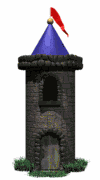
Italian Gardens -
Classic Renaissance Gardens
![]()
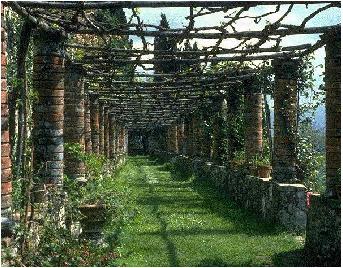

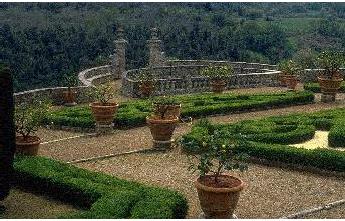

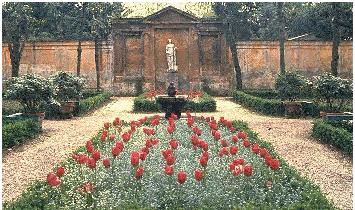
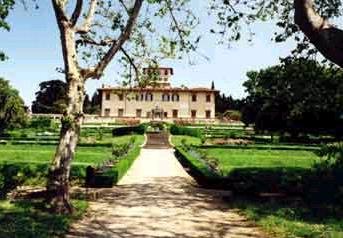
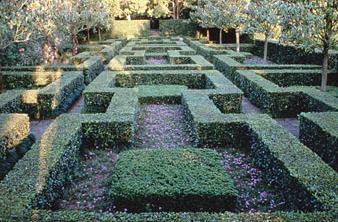
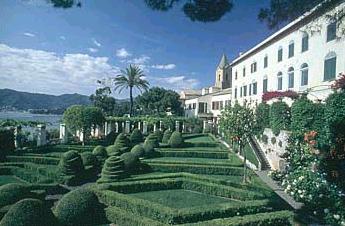

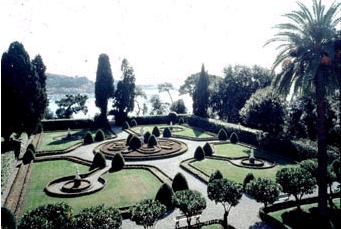

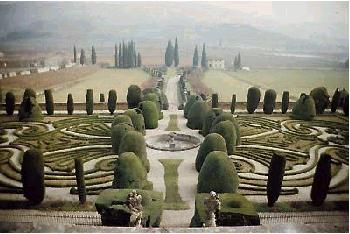
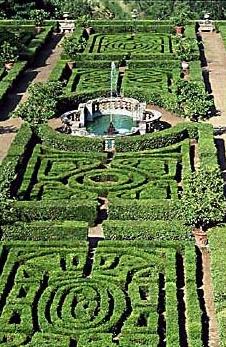
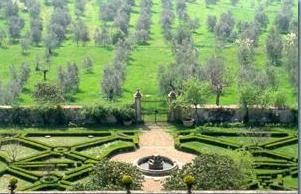
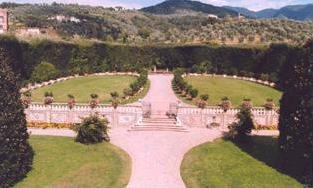
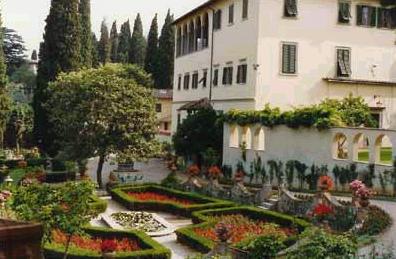
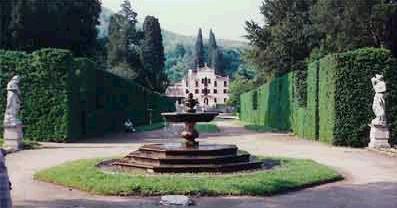
Books About Italian Gardens
Introduction

The Renaissance Garden
Outlining with Evergreens

Topiary and Statuary
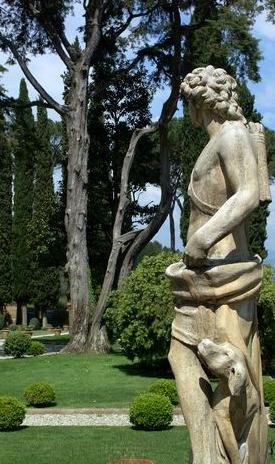
Fruit Trees
Arches and Pathways

Trellises and Climbing
Plants

Terracing
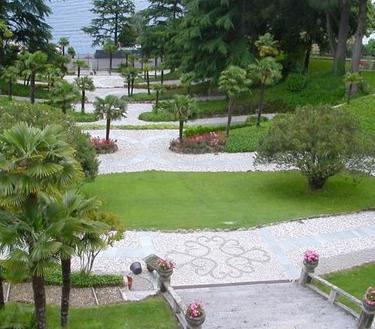
Potted Plants

Tightly Planted Beds

Water Features

Planned with the Villa

Structures
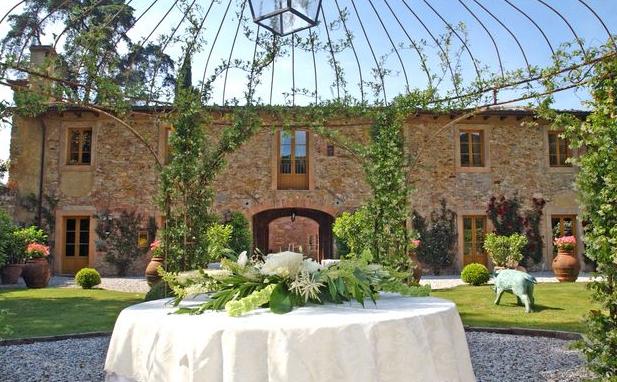
Garden Furniture

The General Mood

Personal Touches
Italian Garden Tours
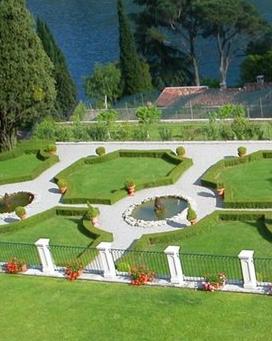

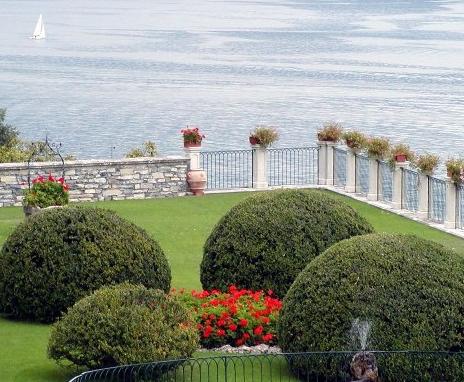
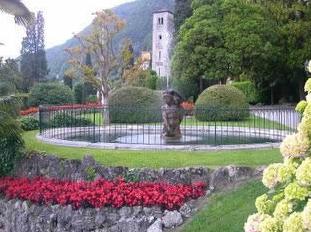
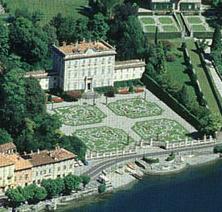
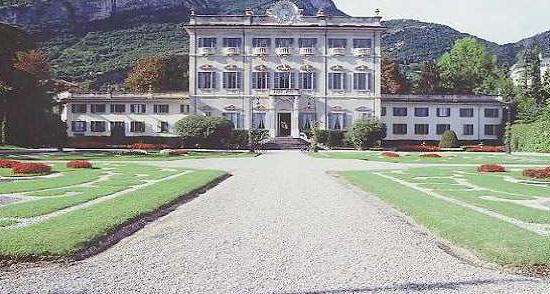

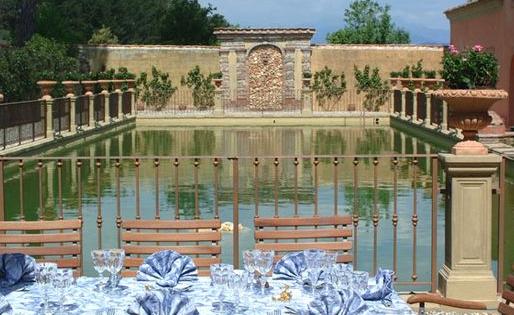

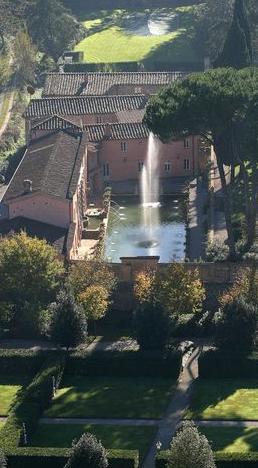
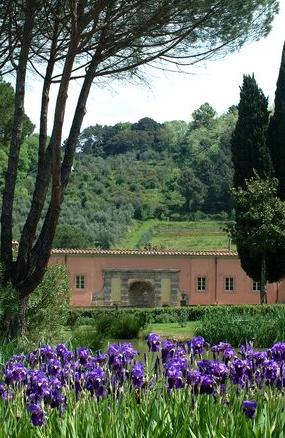

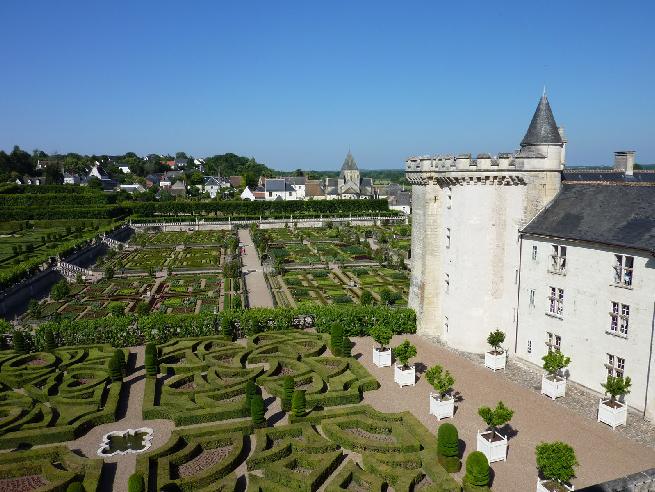
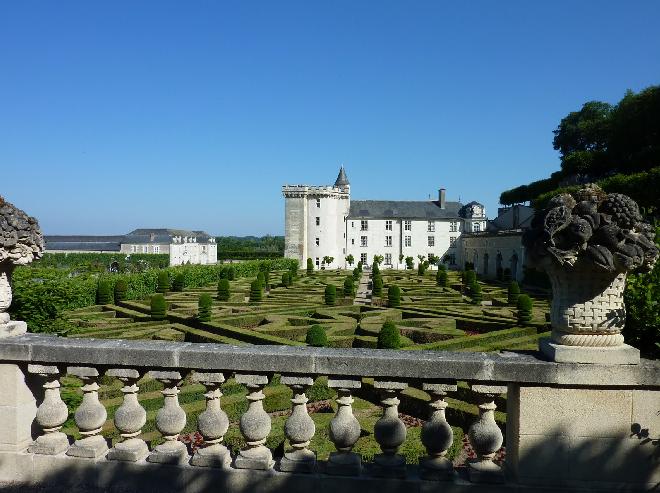

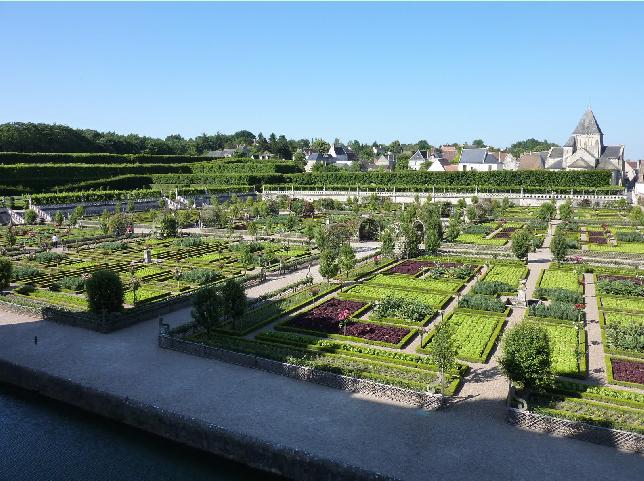
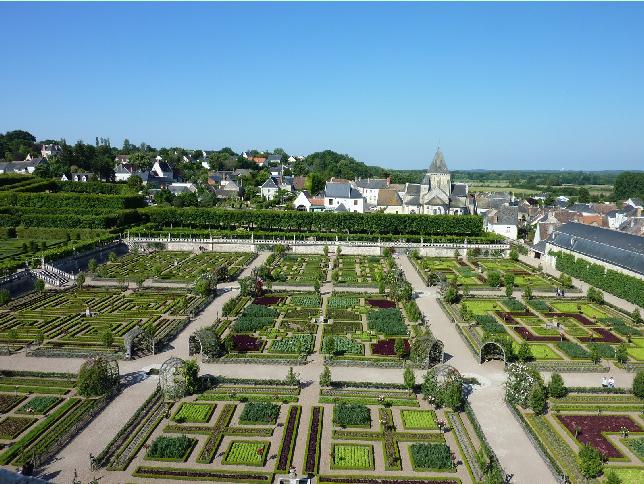
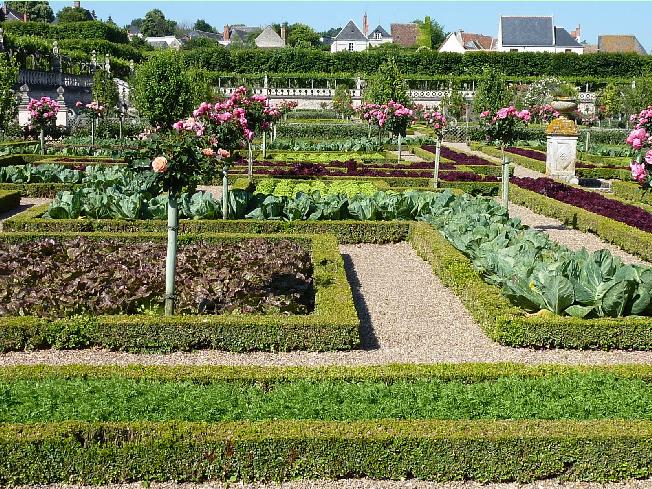
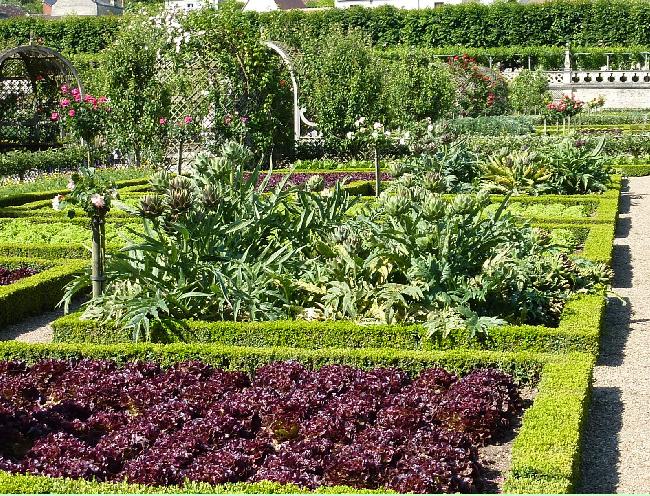
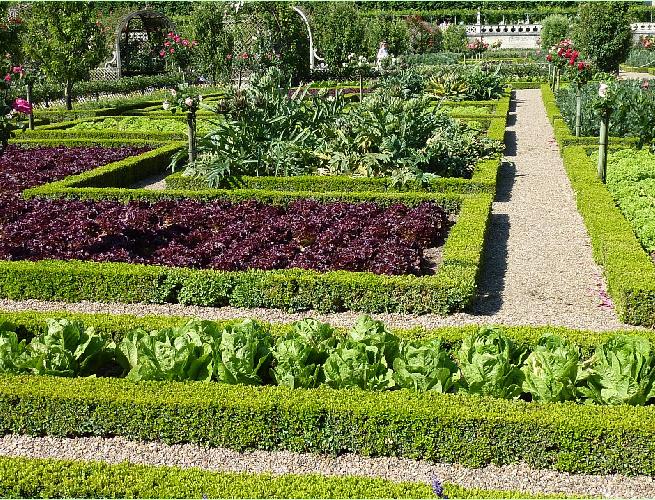
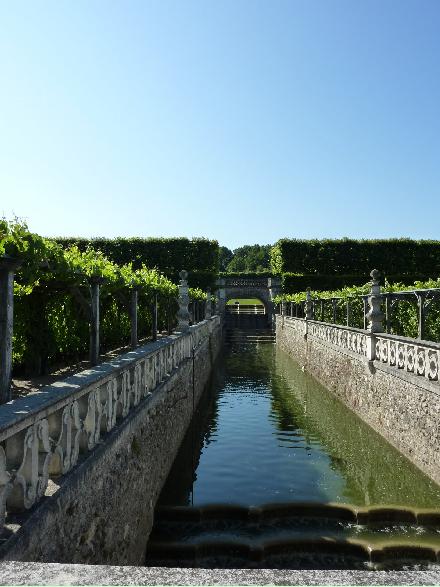
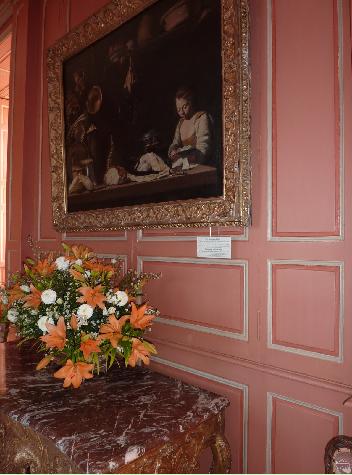
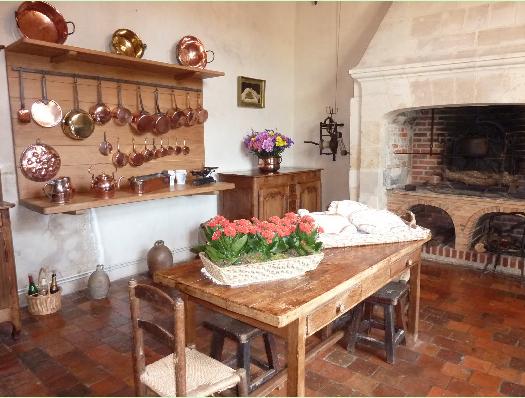
![]()